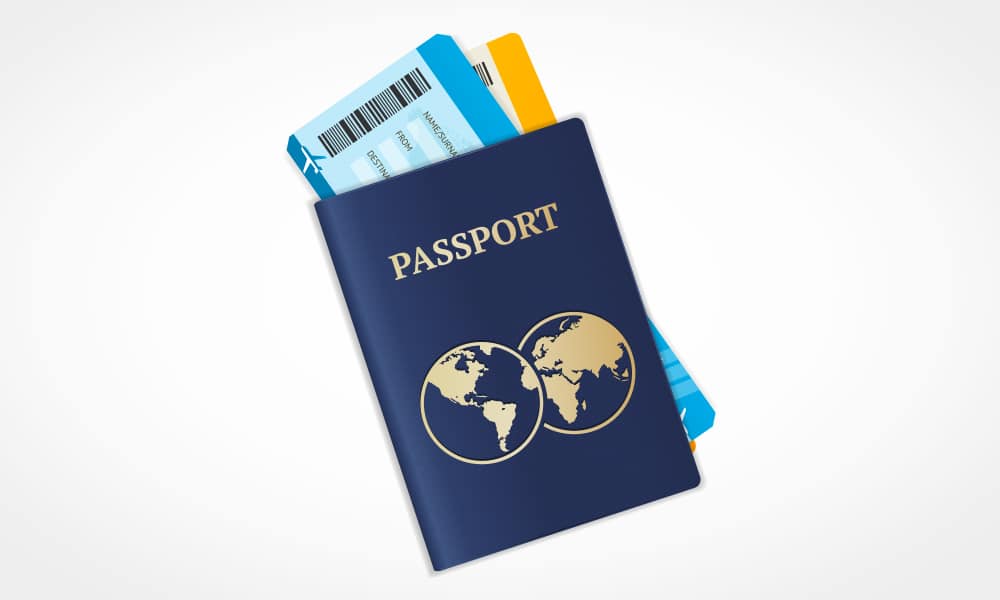


Does any of the traveller have any pre-existing medical condition like BP, diabetes etc? See what it means ›
Now covers COVID-19
Types of Passports in India
Passports & visa-related procedures can confuse many. For new travellers, the first challenge is to arrange a passport before moving on to other important documents. The Indian passport is a common document these days, but there may be things many still don't know about it. For starters, did you know the five types of passports in India? On this page, you will find everything about different Indian passport types.
Travel Insurance Plans on PolicyBazaar#1
- Individuals
- Sr. Citizens
- Students
Types of Indian Passports in 2025
While surfing various countries' immigration websites, you may have come across a list of entry requirements for Indians. A passport, visa and travel insurance plans are among the most important documents for international travel. However, your Indian passport is the first document you need to prepare.
An Indian passport comes with a maximum validity of 10 years, and most countries need it be valid for atleast 6 months before expiry, irrespective of the Indian passport type.

While the Blue Indian passport is the most recognised travel document, many Indians are issued different types of Indian passport based on their eligibility. However, the Indian passport colour varies as well. Some of these Indian passports come with visa-free/visa-on-arrival facilities and even easier immigration clearance. Let's take a look at the various types of Indian passports issued by the government:
-
Ordinary or Blue Passport
Also known as the type P passport, this is the most commonly issued passport in India. The meaning of 'P' here is personal, which is for Indian citizens travelling abroad for personal reasons ranging from studies, business or purely leisure.
Overseas immigration authorities or customs view this passport holder as an ordinary Indian citizen who does not hold any official or government designation in India. While this is the most issued one, this oridinary passport Indian passport has slower immigration clearance compared to official and diplomatic passports. The features of both of these passports have been discussed in later sections.
-
Diplomatic Maroon Passport
You may have come across different immigration websites mentioning 'a diplomatic or official passport' and how people holding this passport don't need a visa to visit that particular country.
The maroon-covered diplomatic passport of India is only issued to government officials travelling internationally on official business. These Indians hold diplomatic status in the country and are free to travel to many countries visa-free.
This passport is coloured deep maroon and is immediately recognised by the immigration authorities. They are also not required to apply for any visas, no matter the length of their trip. This means a quick and easy immigration process.
-
e-Passport or Online Indian Passport
The Indian government launched the ePassport facility in April 2024. This is a combined electronic and paper passport. It has an RFID chip (Radio Frequency Identification) and biometric information of the passport holder. It also has a distinct gold coloured symbol on the front cover.
As of now, only selective offices in India issue e-Passports in India. These include a few offices in Chennai, Amritsar, Ranchi, Hyderabad, Jaipur, Bhubaneswar, Raipur, Surat, Shimla, Nagpur, Jammu, and Goa.
This Indian passport holder's data will be printed in their booklet as well as digitally stored in their electronic chip. It will allow easy and secure authentication by authorities abroad.
-
Service White Passport
Issued by the Indian government, the white Indian passport is the most powerful passport in the country. It is only issued to Indian government officials.
Only individuals going abroad for official purposes or those representing the Indian government are provided with a white Indian passport. This white passport is immediately recognised by customs or immigration authorities, which accelerates their travel formalities.
Some white Indian passport holders include Indian Administrative Authorities (IAS) and Indian Police Department (IPS), who travel abroad for Indian representation.
-
Orange Passport
The orange passport India was specially designed for individuals who have not completed education beyond the tenth (X) class. These passport holders also fall under the ECR category, i.e., Emigration check required.
However, this decision was reviewed by the Ministry of External Affairs and now does not issue orange colour jackets to ECR passport holders since January 2018.
This Indian passport type was primarily introduced to protect the rights of these Indians who could face security issues while visiting or working in another country. Back then, a lot of vulnerable Indians with less education were victims of overseas workplace exploitation. This Indian passport type was launched sans the address page and ensures their protection abroad.
Talking about protection, another very crucial document necessary for safety abroad is a travel insurance policy. Any Indian with international travel insurance can avail of benefits in case of financial emergencies, ranging from medical expenses to passport theft. Thus, it is very important to buy trip insurance as soon as documentation related to yout Indian passport once your ticket and visa work has been taken care of.
Indian Passport Eligibility
Each type of Indian passport is issued to individuals based on their eligibility. This has been briefly shared below:
- Blue Passport: General public travelling abroad for personal reasons
- E-Passport: Offices in Chennai, Amritsar, Ranchi, Hyderabad, Jaipur, Bhubaneswar, Raipur, Surat, Shimla, Nagpur, Jammu, and Goa
- White Passport: Senior government officials and Indian diplomats
- Maroon Passport: Government officials
- Orange Passport: Individuals who have only studied until class 10
You may also like to read: How to apply for Tatkal passport in India?
Benefits of an Indian Passport
Having an Indian passport comes with several benefits. While these may vary with different types of Indian passports, here are some key benefits of an Indian passport:
- International Mobility: An Indian passport allows smooth movement across borders for multiple purposes, including leisure, work, study and medical treatments.
- Visa-free or Visa-on-Arrival Travel: Your Indian passport lets you visit more than 60 countries that don't require a pre-approved visa or any visa at all.
- Proof of Citizenship: Your Indian passport is your official proof of Indian citizenship. It is also the only acceptable proof of identity abroad, important in securing accommodation or while booking rentals.
- Counselar Assistance: In case of any emergency abroad, your Indian passport can help you get assistance at Indian embassies or consulates nearby.
- International Opportunities: Your passport helps fast-track several procedures related to international conferences, getting admissions at international universities, work visa programs and more.
- Business and Professional Travel: You can easily visit multiple countries for different trade fairs, business proposals, summits and more with a passport issued in India.
- Official Purposes: Indian passports, including white and maroon passports allow smooth travel without losing time on formalities or lengthy immigration checks.
- Returning to India: Your Indian passport not only helps you travel abroad, but it also ensures unrestricted entry when you return to India.
Types of Passport in India: FAQs
-
Q: How many types of passport in India as of 2025?
Ans: There are 5 types of Indian passports: P passport for the general population of India, white passport for officers like IAS or other government officials, maroon diplomatic passport for Indian government officials and orange passport for Indians who have not studied beyond class 10. The latest addition to the types of Indian passports is the e-Passport or online Indian passport. -
Q: Who gets white passport in India?
Ans: A White or diplomatic passport is issued to those working for the Indian Government, for example, MEA officers, IAS or IPS officers and their dependents. -
Q: Why is Indian passport colour different for a few citizens?
Ans: Government officers or diplomats are issued a different coloured passport to distinguish them in front of foreign authorities. This avoids many formalities and smoothens the security procedure. -
Q: How to get white passport in India?
Ans: To get a diplomatic passport or white passport, you must be a government employee travelling abroad on official duty. -
Q: Which Colour passport is powerful in India?
Ans: Among the four different categories of Indian passports, the White passport is the most powerful one. It is only issued to government officials who need to travel abroad for reasons of diplomatic and national importance. -
Q: What is ECR?
Ans: ECR indicates that they must undergo an immigration check every time a person travels abroad. Indians holding orange passports or those with ECR required must fulfil all the immigration requirements as per the immigration officials of that country. -
Q: What are the 4 colours of passports?
Ans: Indian passports come in blue, white, orange and maroon colours, depending on the type of passport the person is eligible for. -
Q: What are the benefits of an orange passport?
Ans: The orange emigration passport is very important for vulnerable and less-educated Indians who have a higher chance of getting exploited overseas. This orange passport requires an emigration check every time the passport holder travels abroad. -
Q: Is the passport fee different for different types of Indian passports?
Ans: Yes, the fee varies for different passports. Even for a normal blue Indian passport, the fee is different for the scheme opted, i.e., between tatkaal and a normal passport.
STANDARD TERMS AND CONDITIONS APPLY. For more details on risk factors, terms, and conditions, please read the sales brochure carefully before concluding a sale.
Policybazaar Insurance Brokers Private Limited, Registered Office - Plot No.119, Sector - 44, Gurgaon, Haryana - 122001 | CIN: U74999HR2014PTC053454 | Policybazaar is registered as a Composite Broker | Registration No. 742, Valid till 09/06/2027 | License category - Composite Broker | Contact Us | Legal and Admin Policies
*Price shown is for a 180 day trip to Thailand with 50 thousand dollar coverage for an adult of age 25 years



















































